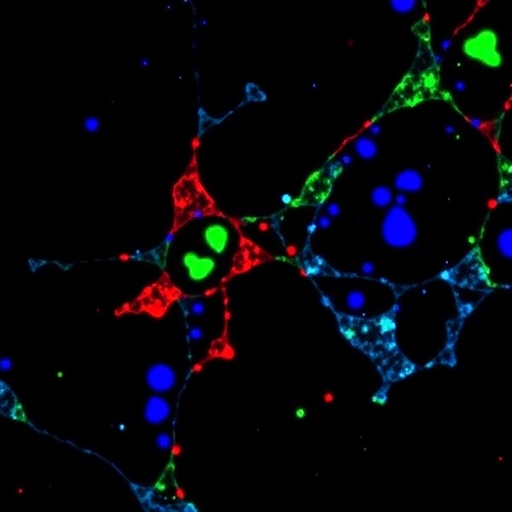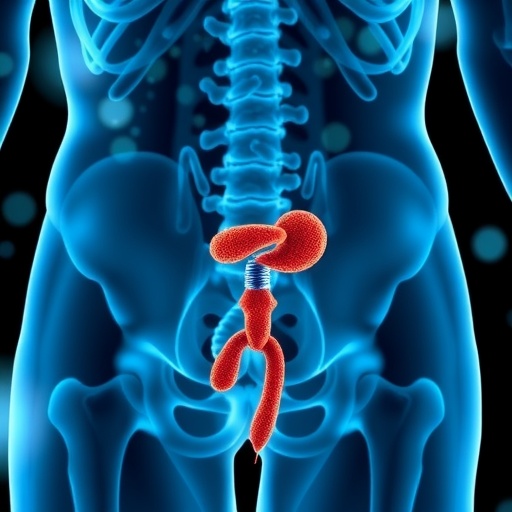In a groundbreaking study set to reshape our understanding of pediatric health, researchers have unveiled the astonishing potential for a rare but severe complication associated with the routine medical procedure of peripheral venous catheter insertion. This new insight, published in a forthcoming article in BMC Pediatrics, highlights the seriousness of pediatric necrotizing soft tissue infections and raises significant concerns regarding the safety protocols used during such common interventions.
A peripheral venous catheter is frequently utilized in pediatric care for the purpose of administering fluids, medications, and nutrients. However, this study meticulously outlines how, despite being a commonplace technique, the procedure might give rise to infection risks that are overlooked by many healthcare professionals. The emergence of necrotizing soft tissue infections underscores a critical need for increased vigilance and comprehension of the potential pathophysiological consequences that could arise, even from straightforward procedures.
Medical practitioners often regard the insertion of a peripheral venous catheter as a benign and straightforward task, often taken for granted in daily clinical practice. Yet, the inherent risks may not be as negligible as previously assumed. In presenting their findings, the research team has initiated a compelling discourse regarding the need for comprehensive education and training surrounding catheter placement and maintenance, particularly in vulnerable pediatric populations. The team argues that awareness surrounding these complications needs to permeate deeper into medical training curricula to ensure that emerging healthcare professionals are well-equipped to manage such risks.
The analysis is largely based on a thorough literature review and case studies that exhibit alarming rates of necrotizing fasciitis and other infections observed in children following catheter placements. The authors meticulously detail the pathogenesis of these infections, elucidating how bacteria, typically skin flora or environmental sources, can infiltrate tissue through seemingly innocuous entry points, leading to catastrophic outcomes. This breakdown of the infection process provides critical insights into both preventive measures and treatment strategies.
Moreover, the authors highlight how timely recognition of symptoms is crucial. The signs of necrotizing infections often manifest subtly but can escalate rapidly. Symptoms might initially mimic minor infections with swelling, redness, and mild discomfort, but can quickly progress to severe systemic responses if left untreated. This progression underlines the importance of thorough clinical assessments and highlights the need for protocols that prompt immediate intervention when early signs are detected.
In addition to clinical management, the study draws attention to the importance of infection control measures. The authors advocate for stringent adherence to aseptic techniques during catheter insertion and maintenance, pointing to evidence that demonstrates a direct correlation between proper protocols and reduced incidence rates of subsequent infections. This calls into question existing medical practices and suggests that even small lapses in procedure can have significant ramifications for patient safety.
The researchers also emphasize the role of interdisciplinary collaboration in addressing these challenges. Pediatric care often involves a team of professionals, from nurses to physicians, and effective communication among this team is vital to mitigate risks during catheter insertion and management. The findings encourage hospitals and clinics to foster an environment where healthcare providers can share insights and concerns regarding procedural safety openly, enhancing the collective knowledge on mitigating infection risks.
In light of these findings, the authors recommend revisiting existing clinical guidelines surrounding peripheral venous catheterization in pediatric patients. They argue that enhancing these guidelines could lead to improved outcomes and reduced incidence of necrotizing infections. Recommendations might include modified training programs, the implementation of advanced technologies, and more rigorous follow-up protocols that ensure ongoing monitoring of patients with central venous access.
In tandem with educational initiatives, policy recommendations are also vital. Institutions are encouraged to consider policies that mandate the reporting and review of adverse events associated with catheterization procedures. Such measures could foster a culture of safety and accountability, creating opportunities for quality improvement in pediatric care.
Contemplating the future, the research posits that technological advancements could play a pivotal role in reducing complications related to catheter use. The advent of smart catheters equipped with sensors that monitor infection indicators could revolutionize patient management. Leveraging such technologies, healthcare professionals could respond more swiftly to potential complications, improving patient safety and outcomes significantly.
The study serves as a clarion call for healthcare professionals and institutions alike to reevaluate their approaches to peripheral venous catheter insertion. By heightening awareness of the potential for necrotizing soft tissue infections, we can collectively enhance patient safety and care standards. The researchers express hope that their findings will inspire a more profound commitment to education, vigilance, and innovation in pediatric healthcare practices, which ultimately aims to safeguard the health of our youngest patients.
In conclusion, the research conducted by Mao et al. is not just pivotal; it is urgent. As the healthcare community grapples with the realities of invasive procedures and their complications, this study emphasizes the need for a multifaceted approach to ensure patient safety. The authors’ thorough analysis, insight, and recommendations serve as a foundation for improving clinical practices that could prevent horrifying outcomes and save young lives.
Subject of Research: Pediatric necrotizing soft tissue infections associated with peripheral venous catheter insertion.
Article Title: Pediatric necrotizing soft tissue infection: unveiling a rare complication of routine procedures – peripheral venous catheter insertion.
Article References:
Mao, SH., Ho, CY., Li, CW. et al. Pediatric necrotizing soft tissue infection: unveiling a rare complication of routine procedures – peripheral venous catheter insertion.
BMC Pediatr 25, 847 (2025). https://doi.org/10.1186/s12887-025-06240-0
Image Credits: AI Generated
DOI: 10.1186/s12887-025-06240-0
Keywords: Pediatric, necrotizing infections, peripheral venous catheter, complications, medical procedures, infection control, healthcare safety.
Tags: awareness of catheter-related complicationscomplications of venous catheterizationguidelines for safe catheter insertionhealthcare professional training in catheter placementimplications of catheter use in pediatricsimproving pediatric healthcare practicesinfection risks of peripheral venous cathetersnecrotizing soft tissue infections in childrenpediatric catheter insertion riskspediatric health safety protocolsroutine medical procedures in pediatricsunderstanding pediatric infections





